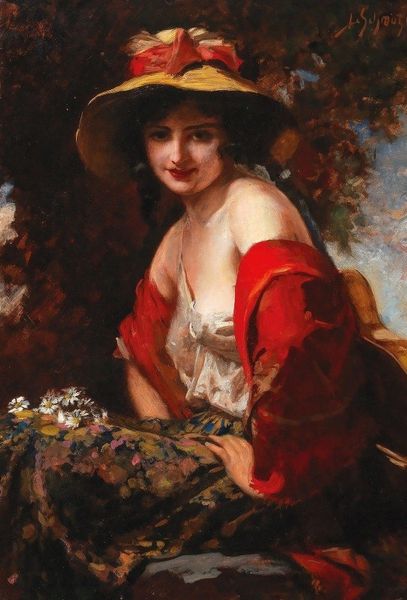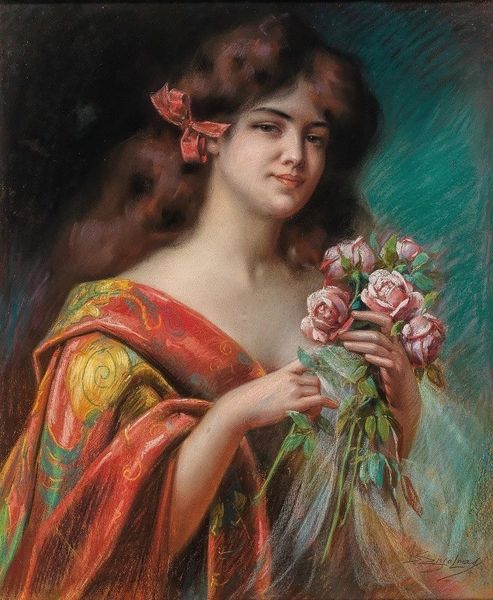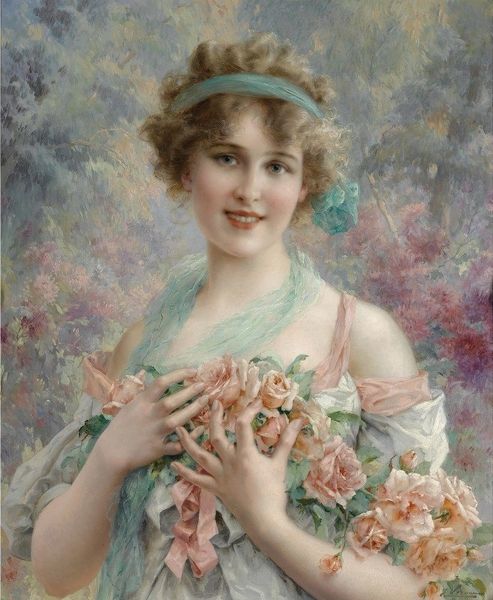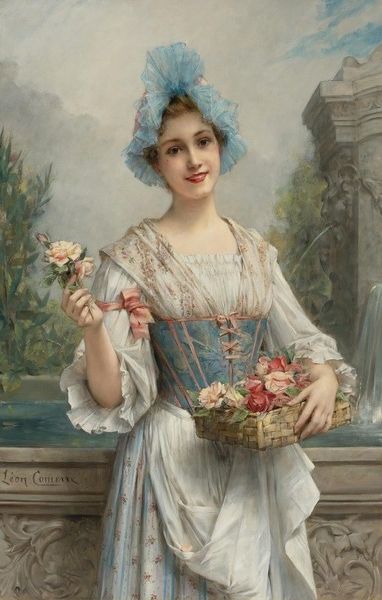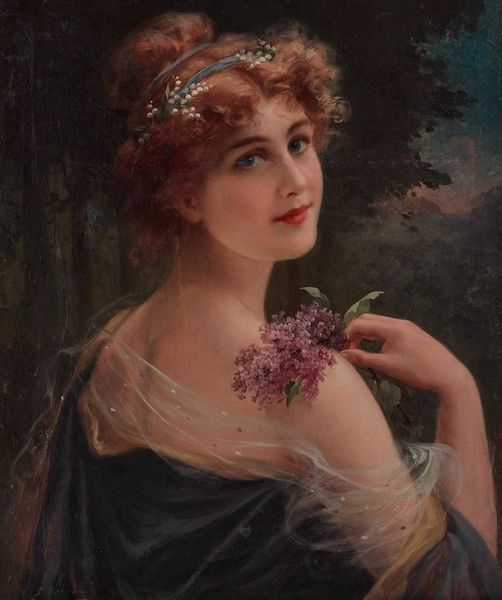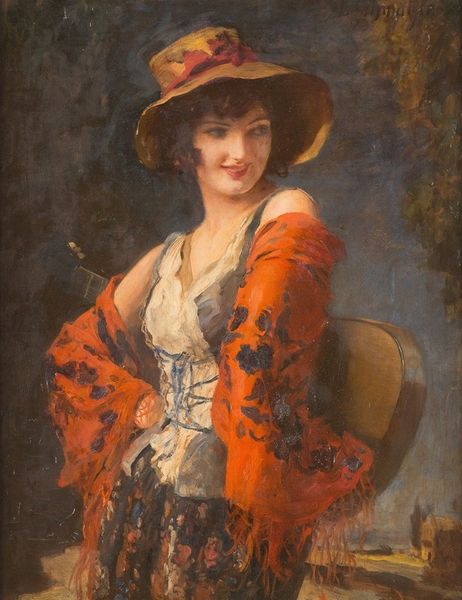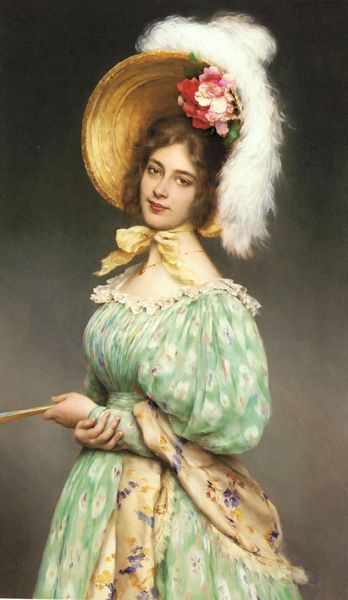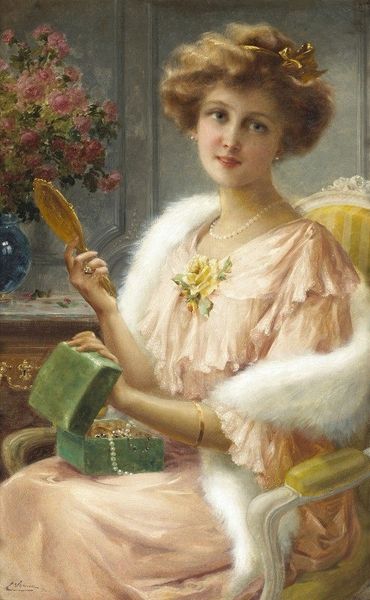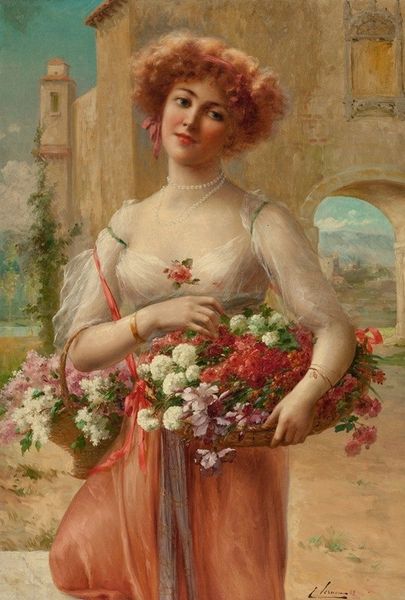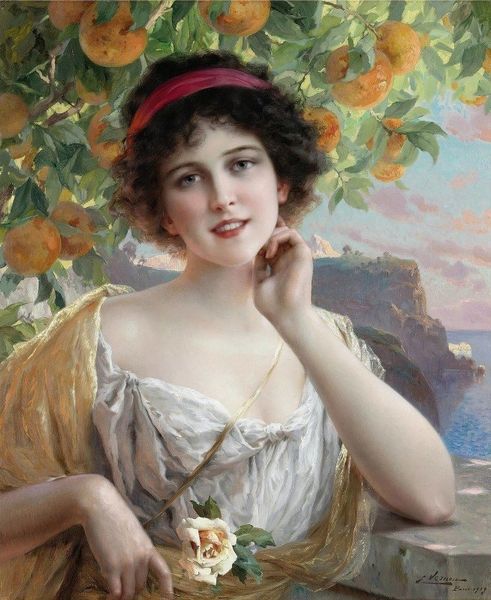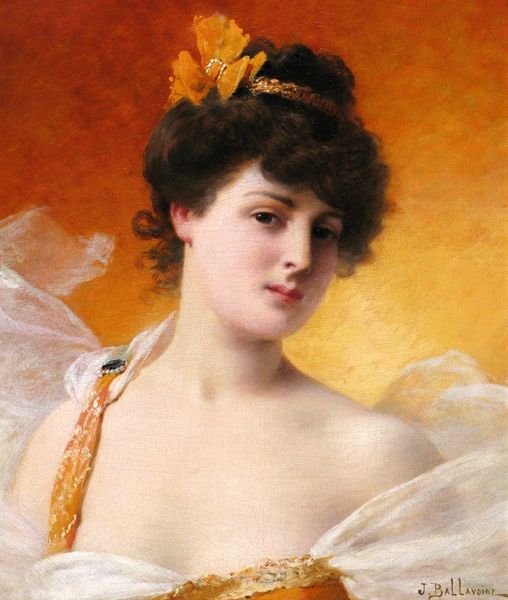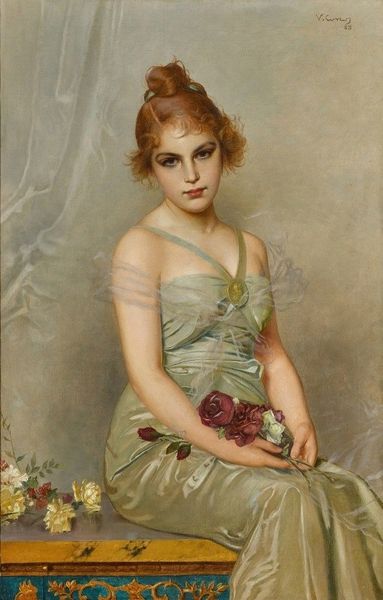
painting, oil-paint
#
portrait
#
figurative
#
painting
#
oil-paint
#
romanticism
#
genre-painting
#
portrait art
Copyright: Public Domain: Artvee
Emile Vernon captured this young woman with oils, her hand presenting a yellow rose, sometime between the late 19th and early 20th centuries. The rose, with its delicate petals, immediately calls to mind ideals of beauty and love. Yet, the yellow rose, in particular, strikes a more complex chord. Across time, the rose has signified divine love, as seen in depictions of the Virgin Mary, but also earthly passions, as emblems of Venus. By Vernon's era, the yellow rose had evolved to suggest friendship, care, or even jealousy. The young woman's placement of the rose stem between her lips infuses the flower with intimacy, a delicate dance of closeness and distance. Consider how Botticelli’s Venus emerges from the sea, flowers scattering around her, announcing love and fertility. The rose, like Venus, carries an inherent duality, its beauty interwoven with thorns, a reminder of the pain that often accompanies love. It is this dichotomy that engages our subconscious, calling forth a myriad of emotions and associations that have accumulated through centuries of art and culture. The meaning progresses through time in a non-linear progression and remains a potent symbol.
Comments
No comments
Be the first to comment and join the conversation on the ultimate creative platform.
